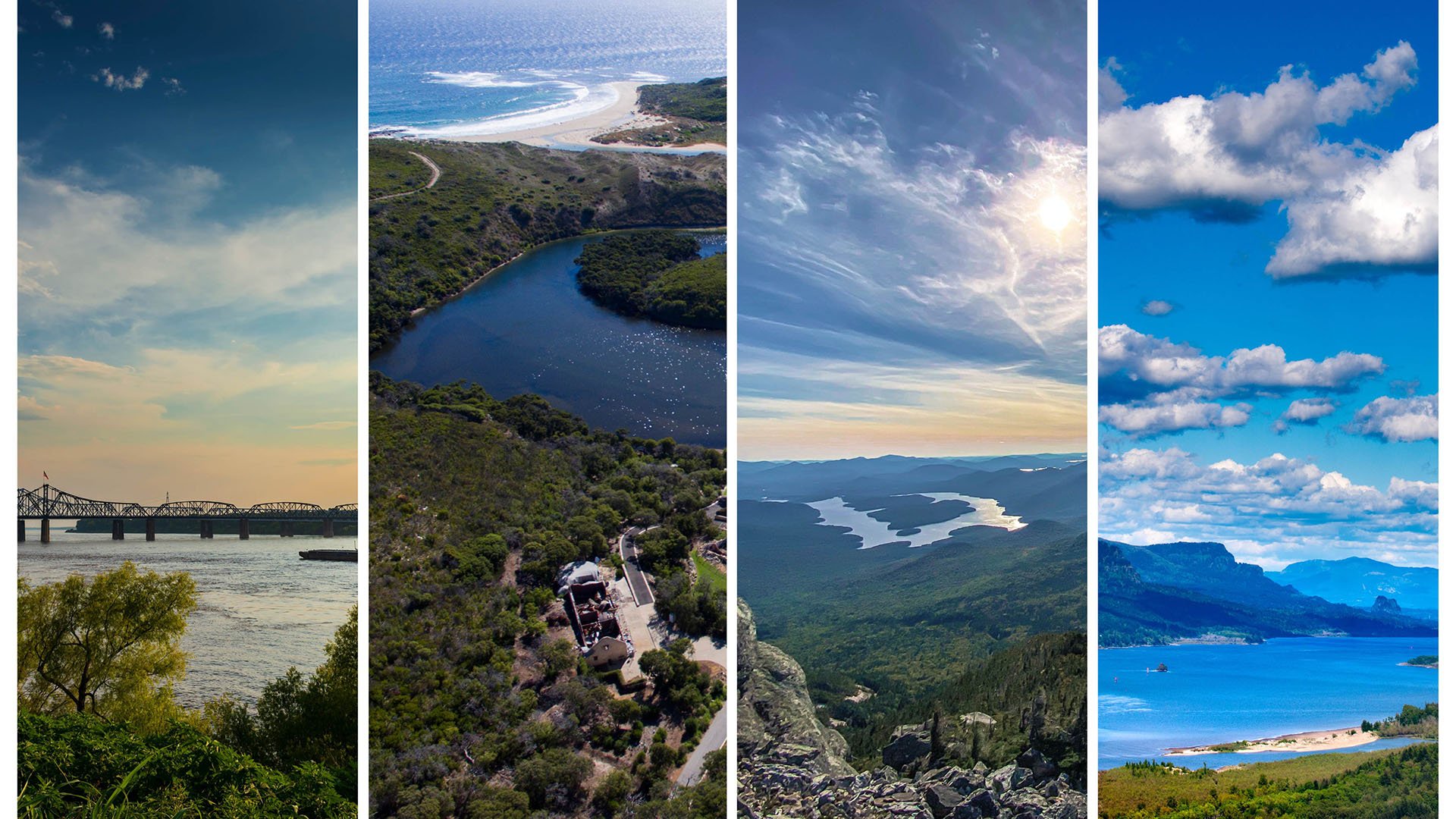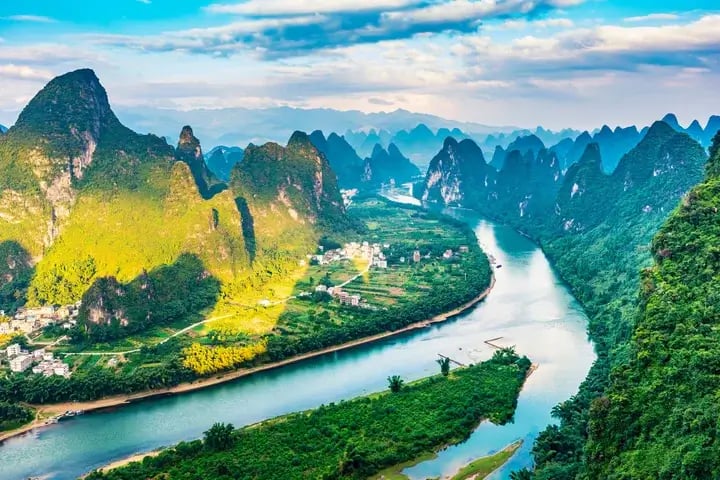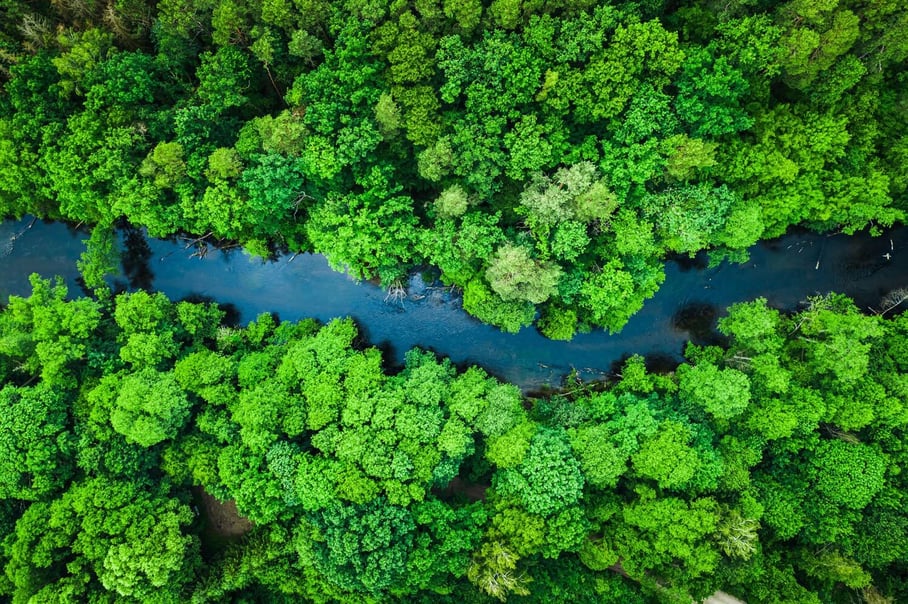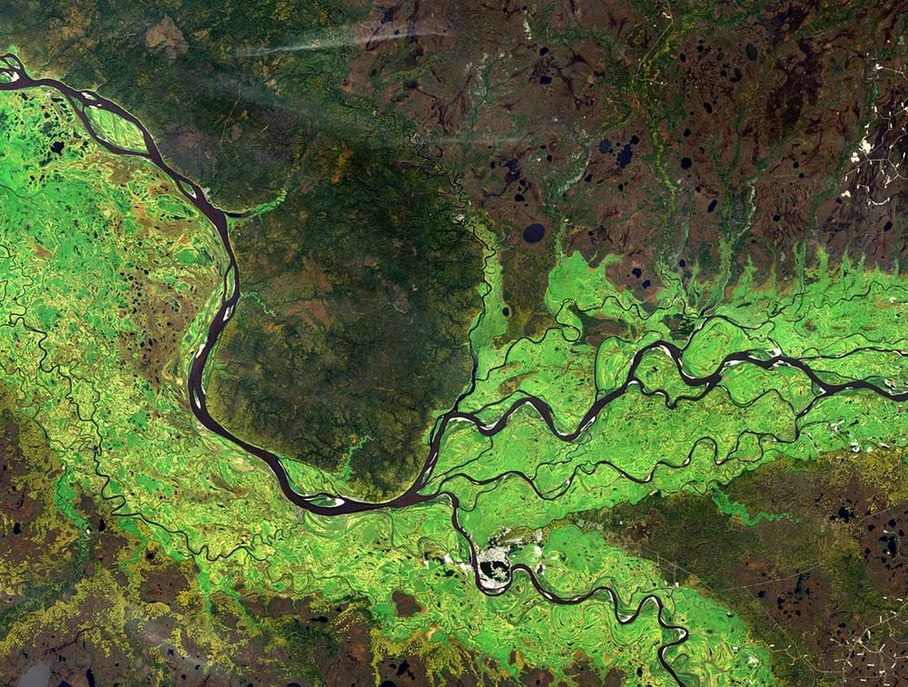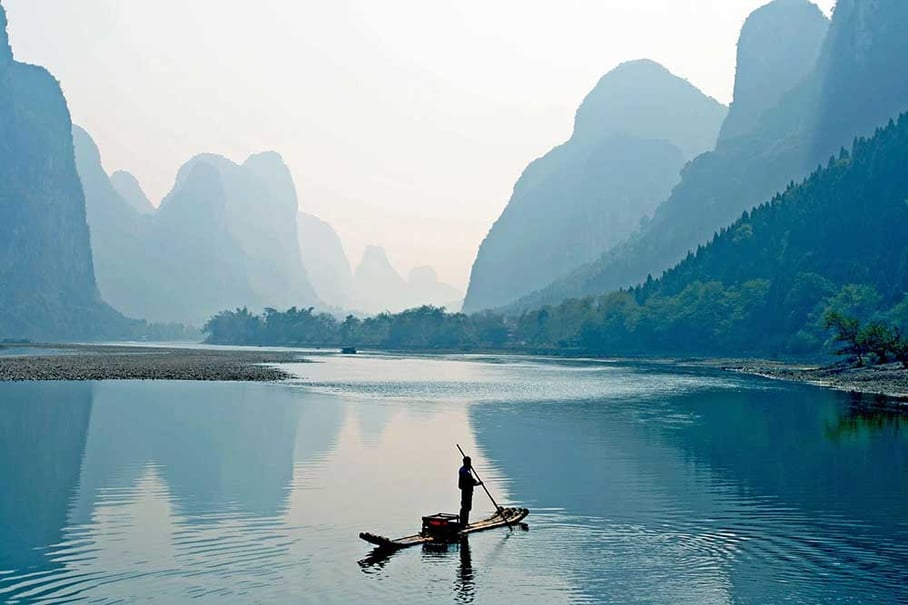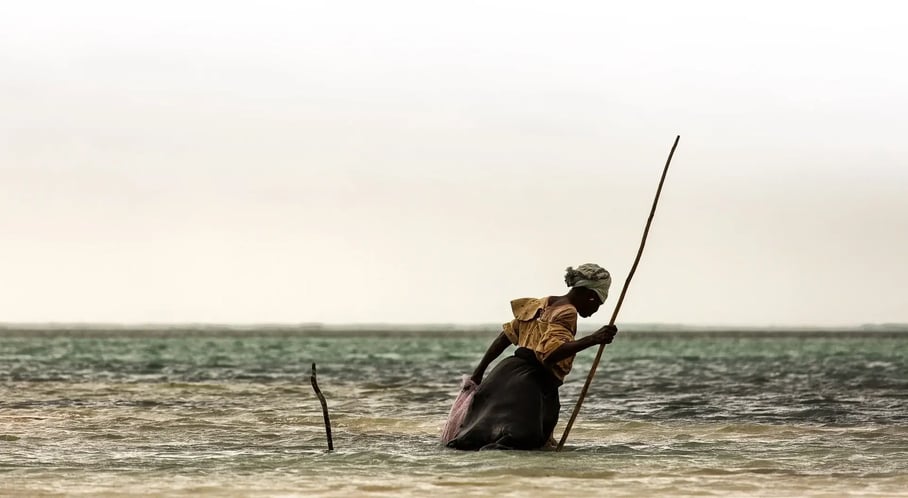Why Rivers Matter
90% of the world’s population lives within 6 miles of a river. We rely on rivers for drinking water and crop irrigation, transportation, and power generation.
The rivers of the world help to regulate the global water cycle and climate, and provide a rich habitat for a wide range of biodiversity.
In fact, rivers and the huge variety of habitats that surround them help to support all life on Earth.
Why River Ecosystems Are So Important
We all depend on freshwater for life. Rivers carry our planet’s freshwater supply across the land, making it accessible to all. It is, quite literally, the life’s blood of our planet.
Rivers support biodiversity which not only creates and sustains the health of freshwater ecosystems, it also supports the livelihoods of hundreds of millions of people worldwide.
More fishers, processors, and traders are supported by freshwater systems including rivers, lakes, and floodplains, than are supported by oceans worldwide.
But, despite being one of the most important features of our world, rivers have also become some of the most threatened.
As the world population continues to grow and the demand for freshwater continues to increase, the pressure on rivers will continue as well. We ignore it at our peril.
A Voice for the River
Fred Tutman, known as the Patuxent Riverkeeper, is among the longest-serving Waterkeepers in the Chesapeake region and is the only African-American Waterkeeper in the country. He has received many awards and much recognition for his environmental work in Maryland. Fred founded the Patuxent Riverkeeper organization in 2004 and remains its steadfast, grassroots leader and community advocate.
“I like to imagine what this river might have looked like 200, 300, 400 years ago.” Fred says while sitting on the bank of the Patuxent River, “It might have looked much like this. And I suspect that it probably did. Except there were probably a lot more fish in it in those days. The water quality was much better. Water, I think people are becoming aware, is an increasingly scarce commodity. And there’s a lot going on in these rivers in terms of what affects them that we will not get back.” He goes on to remind us, “These are fragile resources, in some respects. They’re resilient in other respects. But fragile in the sense that if you keep putting bad stuff in them, they’ll return the favor.”
Echoing Fred’s thoughts, research has discovered that since 1970, freshwater species have declined by 84% and almost a third of wetland ecosystems have been lost as a result of human activities.
Freshwater habitats are home to 1 in 10 animal species. However, these vital ecosystems are being destroyed twice as fast as ocean or forest habitats.
Sadly, according to recent studies, rivers and lakes are the most degraded ecosystems in the world. Activities such as pollution, overfishing, habitat loss, damming, and unsustainable development pose serious threats to rivers everywhere.
To reverse this trend and ensure a sustainable future for river systems worldwide, we must make every effort to protect, restore, and conserve these vital ecosystems.
Protect and Conserve
While conservation efforts may seem daunting in the face of such grim statistics, the resilience of nature should encourage us. Habitats and wildlife have amazing abilities to return and revitalize areas when given the opportunity. Our task is to provide that opportunity.
On a large scale, advocating for responsible agriculture and industrial practices are goals we can support. As well as encouraging local governments and communities to use land responsibly and restore degraded habitats along rivers.
Other topics to promote and advocate for are responsible fishing practices and protecting key river flows and floodplains. Joining larger organizations can be helpful in making your voice heard on these larger topics.
However, when it comes to individual choices, your impact can be more immediate. Use eco-friendly products in your home and garden and reduce your reliance on single-use plastics.
Obviously, a complex issue like river conservation cannot be solved by a single entity or person. It will take many governments, industries, and millions of people across the globe working together to make a difference.
River Conservation in Action
Conservationists worldwide have recognized the need for initiatives that include freshwater ecosystems and they have developed some incredible solutions.
Conservation International‘s comprehensive approach involves partnering with indigenous peoples and governments, and relies on research science as well as grants, loans, and trust funds to ” develop novel ways to finance the long-term protection of nature at scale.”
One of their more ambitious initiatives is that to protect the global ecosystems that contain vast carbon sinks – up to 15 years’ worth of carbon emissions in total. If these habitats were to be destroyed and this carbon released into the environment, it could not be restored by 2050. This is called “irrecoverable carbon” and is one of the biggest threats faced in the fight against climate change.
These vast carbon sinks include peatlands, marshes, and mangroves – all freshwater or brackish water (a mix of fresh and saltwater) ecosystems which connect to rivers, often near coastlines. They span across six continents and contain a total of over 260 billion tons of irrecoverable carbon. And, they are being destroyed at an alarming rate, most often to make room for oil palm plantations.
Fortunately, the scientists working with Conservation International are creating “treasure maps” to identify the most valuable areas of habitat, the places which would represent the greatest loss of irrecoverable carbon if destroyed. These maps will act as guides for industry leaders and stakeholders, for governments and policy makers to show them where it is critical to preserve natural space.
While Conservation International is making a difference on a global scale, other organizations make big impacts at a local level within their communities. Although their reach may be more narrow, it is no less valuable to the cause of river conservation.
For example, in India, the Narmada River Basin Project has helped to slow the fragmentation of wildlands by supporting traditional tribal practices, such as harvesting forest products.
And in Denmark, a program called Kongeegen (or “King’s Oak”) has helped to improve water quality and restore degraded river habitats through re-wilding efforts.
Regardless of where the efforts take place, the passion behind it remains the same. People who understand what’s at stake and are ready to stand up and make a difference in river conservation.
How to Get Involved With River Conservation
Once your eyes are opened to the importance of our world’s rivers, you never look at them the same way again. They become a magical place of such richness and beauty, you can’t help but feel compelled to protect them. With that compulsion comes a desire to find others who share your passion. Fortunately, you don’t have to look very far.
Groups Around the World
National and International organizations like American Rivers and Waterkeeper Alliance are always happy to welcome new volunteers to the cause of freshwater conservation.
American Rivers was founded in 1973, and since then has inspired dedicated conservationists to protect over 150,000 miles of river. This national group is based in Washington, D.C. but has local chapters all over the U.S. and welcomes volunteers to take up the call of river conservation wherever they live.
The Waterkeeper Alliance is a global network of over 300 local Waterkeeper groups that patrol and protect over 2.5 million square miles of rivers, lakes, and coastal waterways worldwide. They are passionate activists leading the way to conserve our planet’s freshwater ecosystems for future generations.
Groups Close to Home
When exploring volunteer opportunities, remember to look locally, too, for conservation groups. Most cities near rivers host volunteer-run groups that frequently have clean-up events and may offer free seminars on how you can get involved in local efforts.
One amazing group that started locally and has grown into a multi-county organization that has flourished for over 50 years is The Conservation Foundation in North-Eastern Illinois. TCF welcomes volunteers from all over the Illinois area and beyond and offers plentiful resources on how to get involved in conservation efforts at home and in your community.
From suggestions on how to conserve water using rain barrels to how to plant native gardens and earth-friendly landscapes, TCF has perfect suggestions on how to implement conservation into your everyday life. They also provide pages on volunteer opportunities, professional resources, events, and regional partnerships. TCF really is a one-stop-shop for all things conservation in the NE Illinois region.
However you get involved in river conservation, the bottom line is that action is always better than inaction. Something is always better than nothing. Once you know better, you can do better. Now is the time for all of us to do better.
Our Rivers, Our Future
Rivers are the lifeblood of our planet, providing sustenance not only for plants and animals but also for human populations worldwide. As we continue to face the challenges of climate change, it becomes increasingly important that we work together to protect our rivers.
Fortunately, there are many passionate people who are already doing this essential work, and you can join them! By getting involved with a group in your area or joining a national organization, you can help make a difference in river conservation too.
The words of Jane Goodall have, perhaps, never rung more true than in this age of climate change and crisis.
“You cannot get through a single day without having an impact on the world around you. What you do makes a difference, and you have to decide what kind of difference you want to make.”
Share this
You May Also Like
These Related Stories
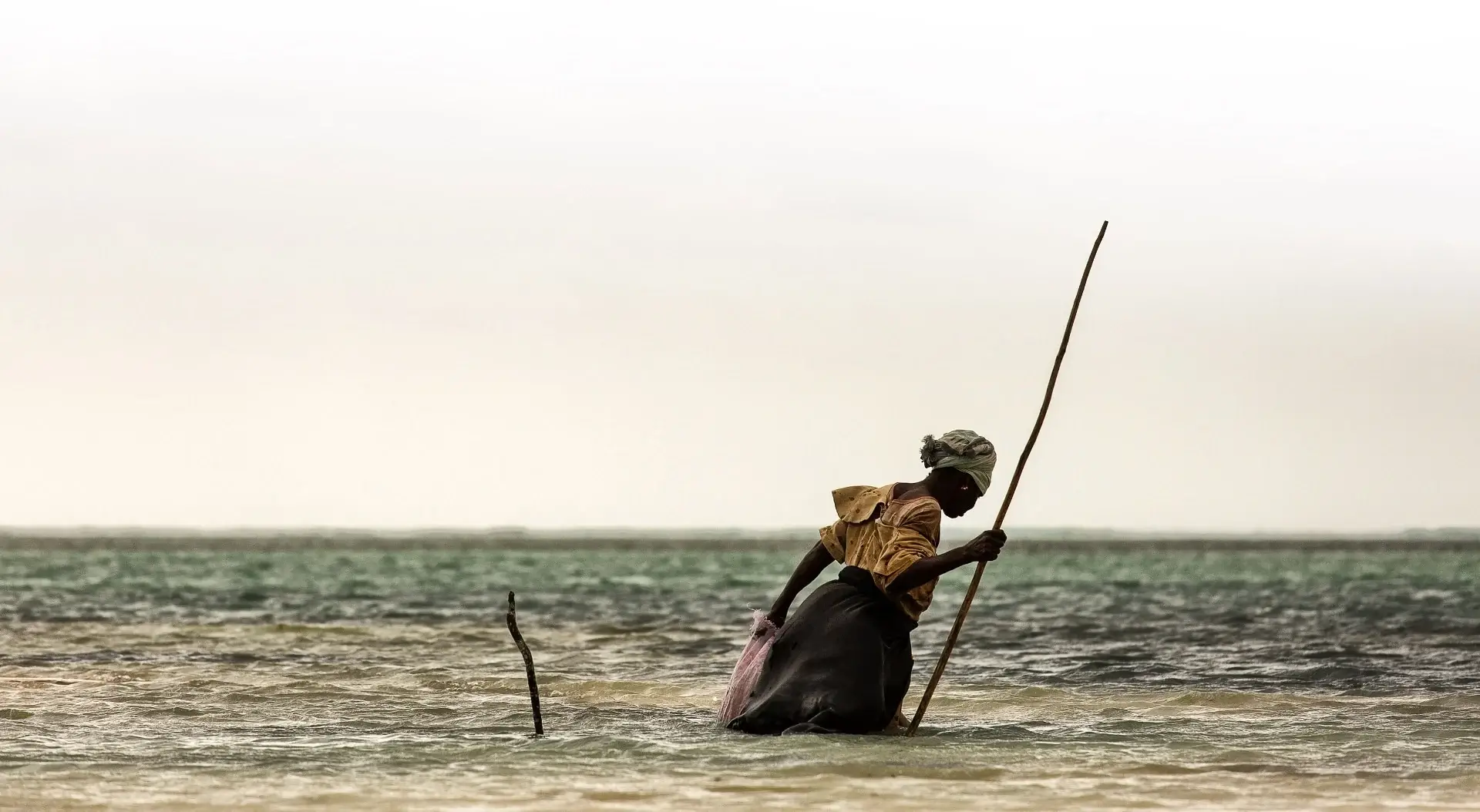
Nile River: Treasure of Past, Present, and Future
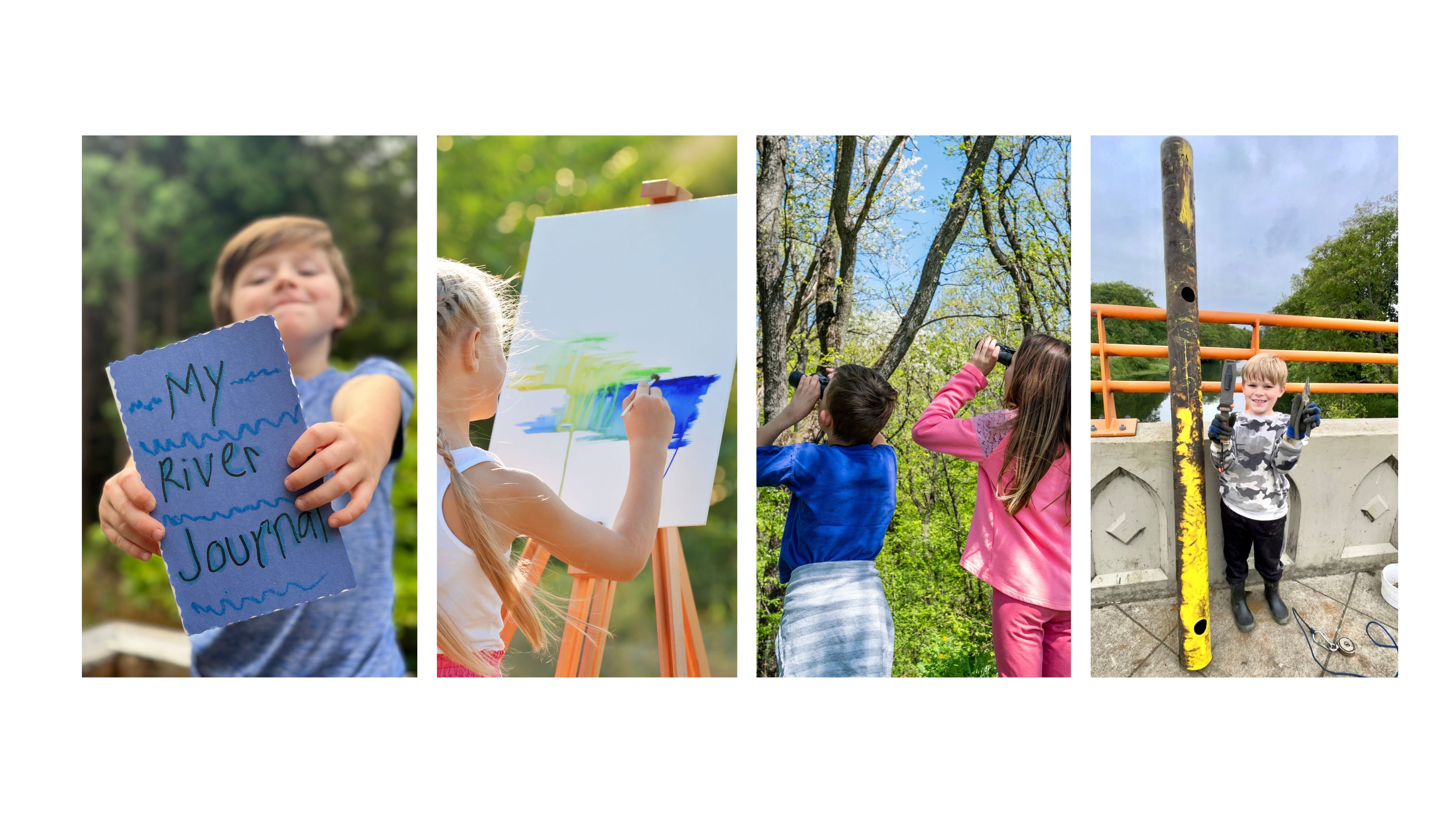
Riverside Connections: Family Adventures Await
